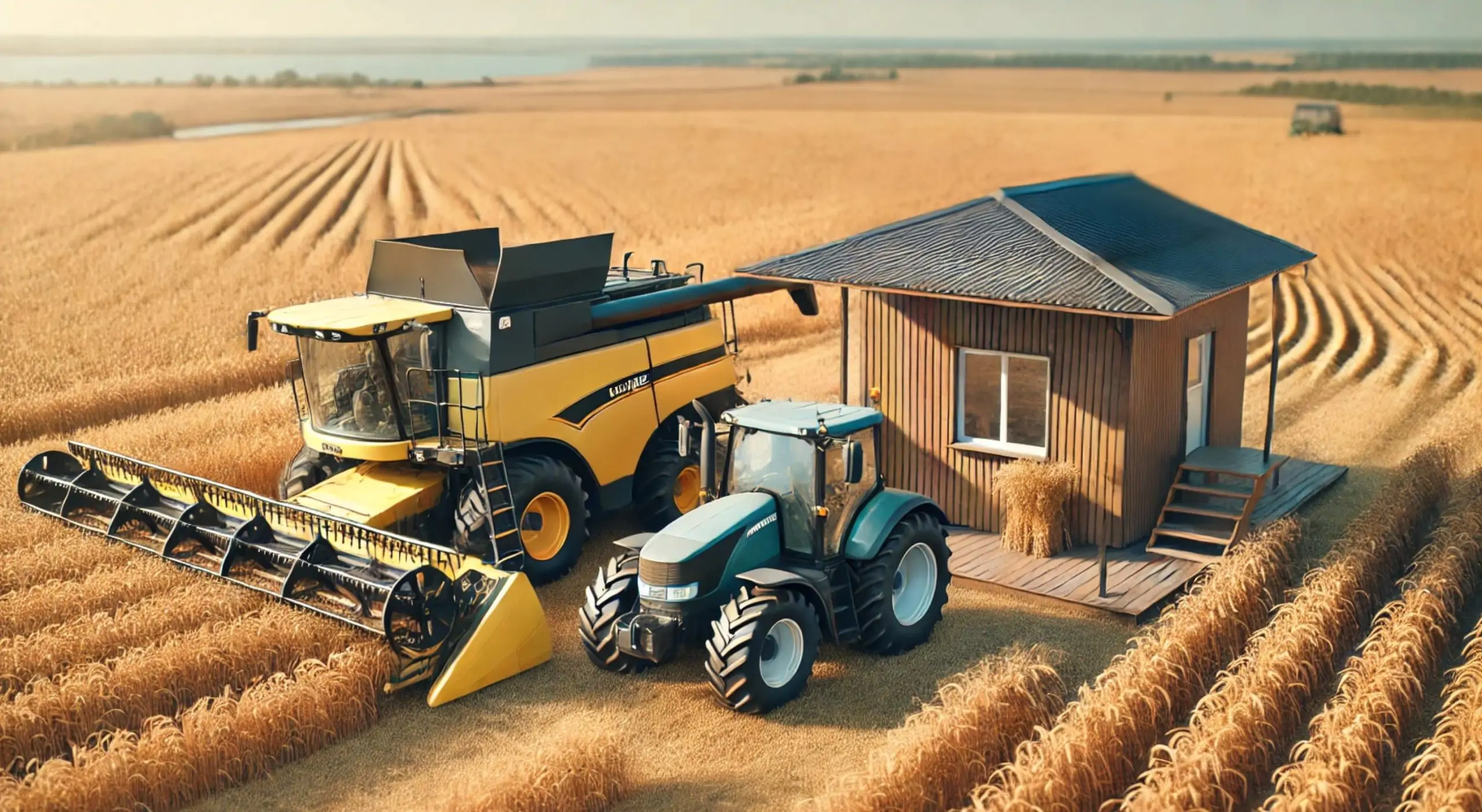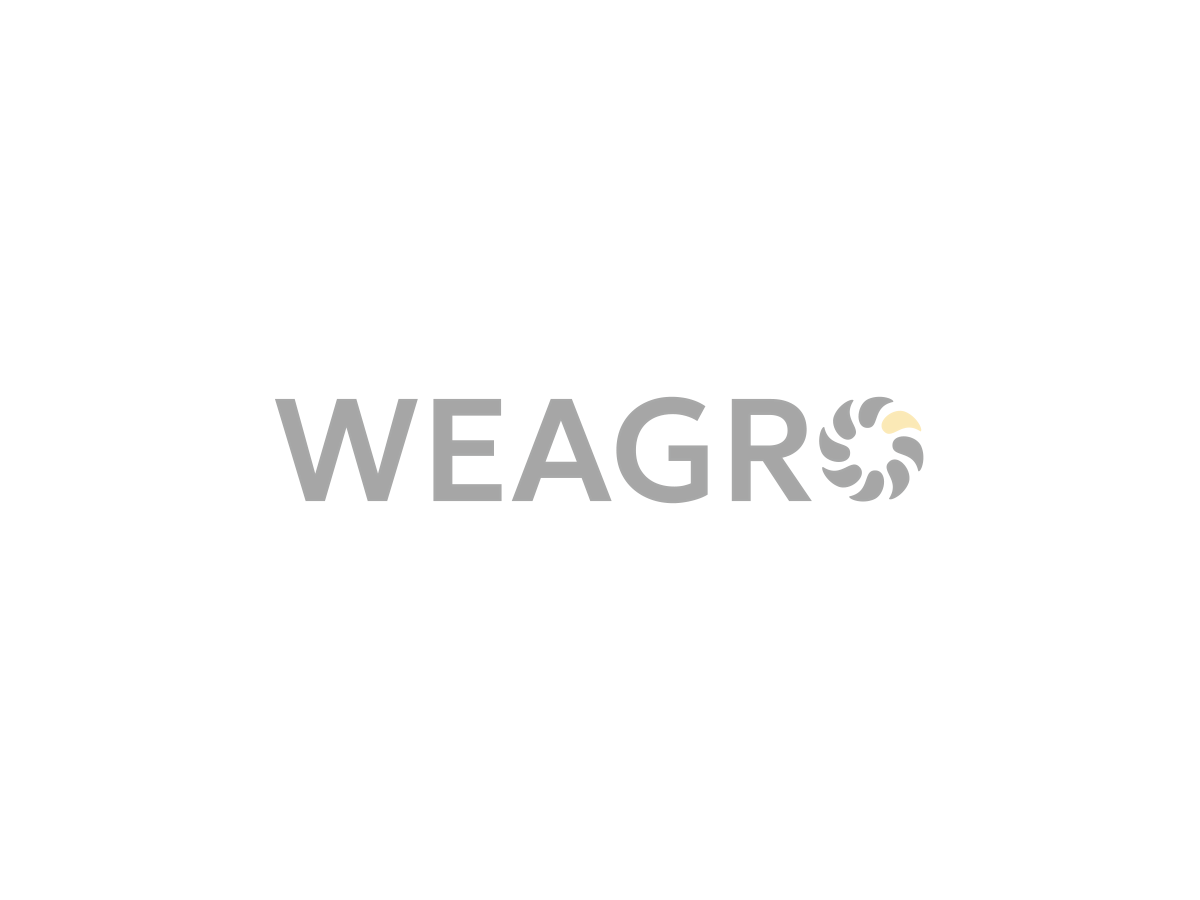Leasing is a convenient financial instrument that allows farmers to purchase modern agricultural equipment and machinery without significant one-time expenses. In this article, we will examine how this system works in the agricultural sector, what types exist, and what their features are.
What is Leasing
Leasing is a special type of investment activity where a company purchases equipment from a supplier and then rents it to a client for a certain fee, under certain conditions and for a certain period, with subsequent transfer of ownership rights to the lessee.
In the agricultural sector, operational leasing allows farmers to gain access to modern agricultural equipment without the need to withdraw significant funds from circulation at once. The lessor takes care of equipment registration, insurance, and documentation. The farmer can immediately start using it, making payments from the profit received.
It is important to note that until full payment is made, the equipment remains the property of the lessor, who is responsible for its proper condition. This is additional security for the client and reduces risks associated with ownership and maintenance. Now that we have defined what leasing is, it’s time to understand the varieties.
Read also: Product profitability: what it is and how to calculate the indicator
Types of Leasing

Ukrainian agribusiness has access to several main types of leasing, each with its own features and advantages.
Financial
What is financial leasing? It is considered the most common and provides that during the contract term (usually 3 to 5 years), the lessee fully pays the equipment cost along with interest, after which they become its rightful owner. Financial leasing is an opportunity for agricultural entrepreneurs to significantly save when purchasing equipment and distribute the financial burden.
Operational
Characterized by the fact that the equipment rental term is shorter than its full depreciation period. After the contract expires, the client returns the equipment to the leasing company, but can purchase it at residual value or extend the lease if desired. This type of leasing is particularly beneficial for farms that need to periodically update their equipment fleet to keep pace with technological progress.
Sale and Leaseback
Sale and leaseback leasing is a scheme where the lessor purchases property already owned by the client and then leases it back. This allows farmers to free up funds invested in equipment and direct them to business development while continuing to use the equipment. Such a mechanism can be an effective tool for replenishing working capital of agricultural enterprises without losing production capacity.
International
Involves participation of companies from two or more countries in the transaction. It is used when necessary equipment suppliers are absent in one’s own country or when foreign lessors’ conditions are more attractive. International leasing is a system that opens access for Ukrainian farmers to advanced imported agricultural technologies that are difficult to purchase domestically.
In addition to the main types, operations are classified by a number of additional features. Depending on the composition of transaction participants, they distinguish:
- direct leasing – when the supplier itself leases the equipment;
- indirect – when a lessor-intermediary participates in the transaction;
- leveraged leasing – when several lessors finance one large transaction.
By payment nature, they distinguish lease agreements with full, partial, or residual purchase value, as well as with fixed or floating payments.
Leasing in Ukraine
The Ukrainian agricultural equipment leasing market is developing dynamically and attracting more participants from both lessors and farmers. According to data from the National Financial Services Commission, the share of agricultural industry enterprise transactions consistently accounts for over 20% of the total value of financial leasing contracts.
Similar leasing conditions for agricultural enterprises are offered by both specialized companies and major financial institutions, including ProCredit Bank, OTP Bank, Raiffeisen Bank, and UkrSibbank. They cooperate with leading Ukrainian and foreign agricultural manufacturers, providing clients with equipment choices and optimal financing conditions.
The average leasing term in Ukraine ranges from 3 to 5 years, but for certain types of equipment it can reach 7-10 years. The initial payment size under contracts varies from 20% to 40% of the leasing object value depending on its liquidity, as well as the recipient’s financial condition and credit history. Interest rates are usually floating and tied to the NBU discount rate or LIBOR rate.
How to Lease Agricultural Equipment in Ukraine
The procedure for arranging agricultural equipment leasing in Ukraine is simple and transparent. It includes the following main stages:
- Selection of the operational lease object and supplier. The farmer determines the necessary equipment and finds a company ready to supply it. Many lessors have partnership agreements with agricultural equipment manufacturers and dealers, offering clients special offers and discounts.
- Preparation of document package. The lessee collects and submits the necessary set of documents to the company, which usually includes: financing application, client questionnaire, founding documents, financial statements for recent periods, documents for the lease object (specifications, invoices), and business plan for the project (for large transactions).
- Application review by the lessor. The leasing company conducts an assessment of the potential client’s creditworthiness and business reputation, analyzes project profitability and leasing object liquidity. Based on the review results, a decision is made to approve or reject the application, and specific financing conditions are determined.
- Contract conclusion. The lessor and lessee sign an agreement that records all conditions – terms, payment amounts and schedule, rights and obligations of parties, early buyout conditions and contract termination. Related documents are also signed – property transfer-acceptance acts, insurance.
- Transfer of leasing object and payment commencement. The lessor purchases the selected equipment from the supplier and transfers it to the client for temporary use. From this moment, the farmer can operate the equipment and begins making payments according to contract conditions. After the term completion and payment, ownership rights to the property lease object transfer to the lessee.
Read also: How to register and deregister a tractor: procedure and necessary documents
Usually, the main requirements for the lessee are: stable financial position, profitable activity for at least 1 year, and positive credit history. At the same time, collateral requirements for leasing transactions are usually lower than for bank loans, since the operational lease object itself serves as security until its value is fully paid.
Our innovative online service WEAGRO acts as an intermediary between farmers and manufacturing companies that offer equipment, fertilizers, and other goods for the agricultural sector. We help conclude profitable contracts through our online service, ensuring digitization of the entire process. This allows farmers to quickly and conveniently obtain necessary production means, and manufacturers to effectively sell their products, significantly expanding sales markets without unnecessary time and resource costs.
Leasing Prospects in Ukraine
Experts predict continued growth in operational leasing popularity in the Ukrainian agricultural sector. This is facilitated by the course toward modernization and efficiency improvement in agricultural production, as well as state support for farmers.
Leasing development in Ukraine is also promoted by simplified registration procedures, expansion of partnership programs between companies and equipment suppliers, and the emergence of new flexible financing conditions. In the long term, leasing is one of the main tools for technical re-equipment of small and medium-sized farms in Ukraine.
Comparison of Leasing with other Financing Instruments
For a clear demonstration of leasing advantages, let’s compare it with two other popular methods of purchasing agricultural equipment – bank loans and installment payments from suppliers.
| Parameter | Leasing | Loan | Installments | |
| 1 | Financing object | Equipment, machinery | Cash funds | Goods, services |
| 2 | Financing term | Up to 10 years | Up to 5-7 years | Up to 1-2 years |
| 3 | Initial payment amount | From 20-30% | From 30-40% | Not required |
| 4 | Object insurance | Mandatory | At borrower’s discretion | Not required |
| 5 | Tax benefits | Yes | No | No |
| 6 | Property holder | Lessor | Borrower | Seller |
As we can see, leasing in Ukraine has a number of obvious advantages. First, it allows financing equipment purchases for a longer term and with a smaller initial payment. Second, mandatory insurance of the property lease object protects the lessee from risks of its loss or damage. Third, the ability to attribute leasing payments to cost price and accelerated depreciation provide substantial tax savings.
At the same time, unlike loans, under operational leasing the equipment is not on the agricultural enterprise’s balance sheet until its value is fully paid, which reduces the lessee’s property risks.
While leasing is a profitable way to expand your fleet and increase agricultural enterprise efficiency, installment payments, in turn, can be interesting for farms purchasing relatively inexpensive goods for short terms. Unlike lending, you can get installment payments in 30 minutes online without hidden costs, paperwork, and overpayments.
Advantages of Leasing for Farmers
Using operational leasing to finance the purchase of agricultural equipment and machinery has a number of undeniable advantages for agricultural enterprises:
- The ability to obtain modern high-performance equipment for use without significant one-time capital investments. Property leasing allows updating the machine-tractor fleet without withdrawing large sums from circulation and without resorting to expensive loans. This is especially relevant for small and medium-sized farms that do not have sufficient free funds at their disposal.
- Flexibility of financing conditions. Leasing companies offer clients numerous options adapted to their business specifics. Farmers can choose optimal contract terms, initial payment amounts, and payment frequency. Some lessors also offer seasonal payment schedules that account for agricultural production cyclicality and allow the main portion of funds to be paid after harvest sales.
- Accelerated and simplified registration procedure compared to obtaining bank loans. Concluding an operational lease agreement usually requires a smaller document package and minimal collateral. Financing applications are reviewed by leasing companies in shorter terms than by banks, since the property lease object itself is a transaction guarantee.
- Complete transaction support by the lessor. The company takes on obligations for equipment selection from verified suppliers, delivery, customs clearance (for imported equipment), registration, insurance, and legal support. This relieves the lessee of numerous concerns related to equipment purchase and saves time.
- Ability to apply tax benefits. According to Ukrainian legislation, leasing payments are attributed to product cost price and reduce the lessee’s taxable profit. Additionally, accelerated depreciation of the operational lease object allows further optimization of tax payments. As a result, farmers can significantly reduce their fiscal burden.
- Reduction of equipment ownership risks. Until full payment of leasing installments, ownership rights to the equipment remain with the lessor, who bears all risks associated with its breakdown or loss. In case of equipment failure, the leasing company is obligated to provide the lessee with similar equipment during repair time, ensuring production process continuity.
Thus, leasing opens expanded opportunities for Ukrainian farmers to modernize production, implement innovations, and increase competitiveness. At the same time, it is a more accessible and less risky financing instrument compared to traditional bank loans and purchasing equipment at full cost.
Conclusion
Leasing is an effective financial instrument for updating machine-tractor fleets and implementing modern agricultural technologies. It allows farmers to significantly save on equipment purchases, optimize cash flows and tax payments. In Ukraine, leasing services are provided by both specialized companies and leading banks, offering clients a wide choice of equipment and flexible financing conditions.
Various state programs operate for Ukrainian farmers that compensate part of equipment purchase costs. For example, “Affordable Financial Leasing 5-7-9%“, through which even small farms can significantly increase production capacity and improve competitiveness. Therefore, operational leasing definitely deserves attention from all farmers planning business modernization.
Online service WEAGRO is a reliable assistant for Ukrainian agricultural producers in agricultural installment matters. We ensure quick application review, transparent transaction conditions, and convenience of use without office binding. With our online service, farmers can effectively update their machine-tractor fleet, minimizing financial risks and administrative concerns.










